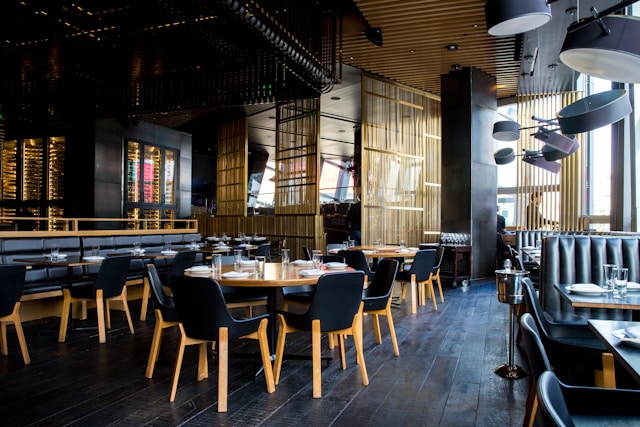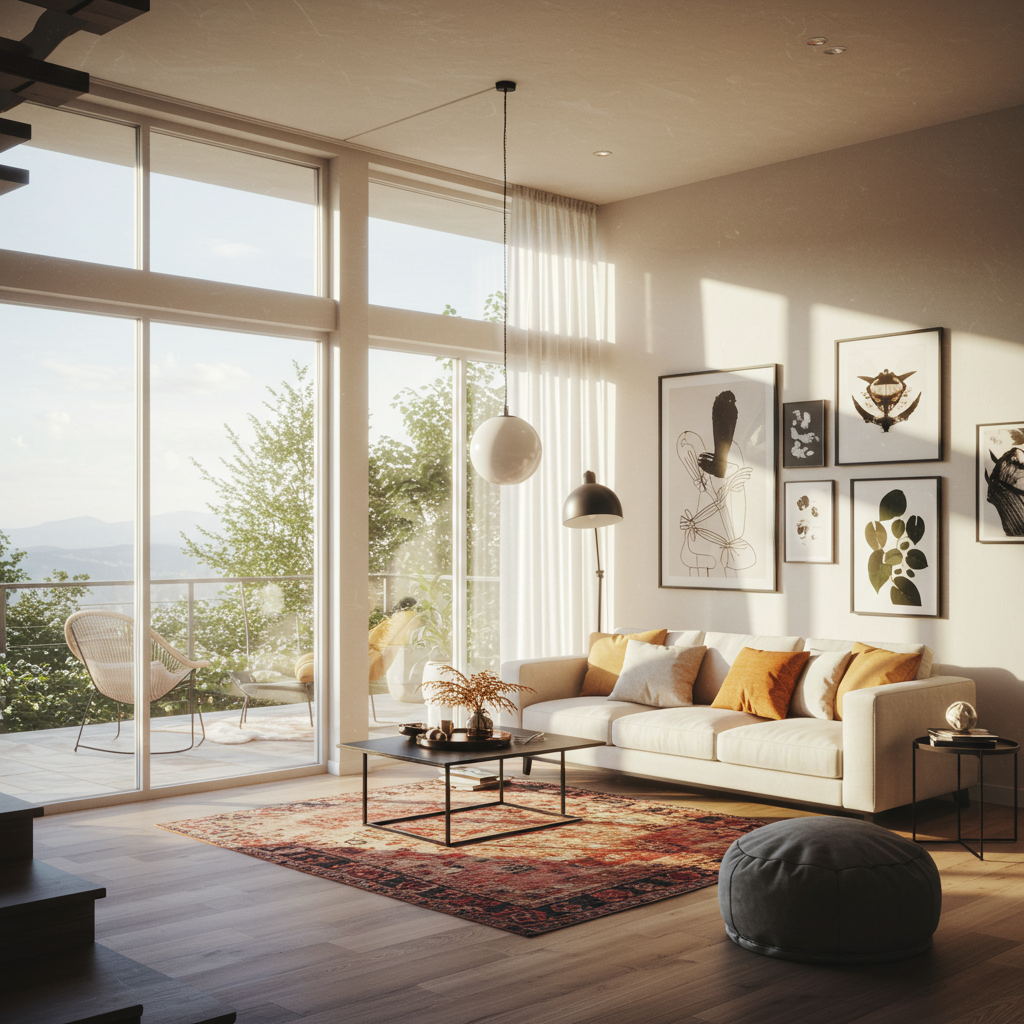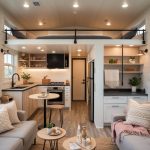The ambiance of a restaurant is as crucial to the dining experience as the food itself. A well-designed interior can transport patrons to another world, enhancing the flavors and creating a memorable dining experience. This article explores how to design a restaurant interior that seamlessly complements and elevates its cuisine.
1. Define the Culinary Narrative:
Before any design decisions are made, it’s crucial to define the restaurant’s culinary narrative. What kind of dining experience are you aiming to create? Is it a casual bistro, a fine-dining establishment, a fast-casual eatery, or something more unique?
- Analyze the Cuisine: Consider the origin, style, and complexity of the food. Is it traditional Italian, modern French, authentic Mexican, or something entirely new?
- Identify Key Characteristics: What are the defining characteristics of the cuisine? Is it known for its bold flavors, delicate textures, regional ingredients, or innovative techniques?
2. Theme and Atmosphere: Setting the Stage
The theme and atmosphere of the restaurant should directly reflect the culinary narrative.
- Casual and Lively: A vibrant, bustling atmosphere might be suitable for a casual pizzeria or tapas bar.
- Intimate and Refined: A more subdued and sophisticated ambiance would be appropriate for a fine-dining establishment.
- Rustic and Charming: A rustic, farmhouse-style interior might complement a menu featuring locally sourced, seasonal ingredients.
- Modern and Minimalist: A sleek, minimalist design could be ideal for a restaurant showcasing innovative, molecular gastronomy.
3. Color Palette: Evoking Mood and Flavor
The color palette plays a vital role in creating the desired atmosphere.
- Warm Colors: Warm colors like reds, oranges, and yellows can stimulate appetite and create a lively ambiance.
- Cool Colors: Cool colors like blues, greens, and purples can create a calming and relaxing atmosphere.
- Neutral Colors: Neutral colors like white, gray, and beige provide a versatile backdrop and allow other design elements to shine.
- Color Associations: Consider using colors associated with the cuisine. For example, a restaurant serving Mediterranean food might incorporate shades of blue and white, reminiscent of the Aegean Sea.
4. Furniture and Decor: Reflecting the Cuisine’s Character
Furniture and decor should reinforce the restaurant’s theme and complement the cuisine.
- Casual Dining: Comfortable, mismatched chairs, wooden tables, and exposed brick walls can create a relaxed and inviting atmosphere.
- Fine Dining: Elegant, upholstered chairs, white tablecloths, and crystal glassware can create a sophisticated ambiance.
- Thematic Elements: Incorporate decor that reflects the cuisine’s cultural or regional origins. For example, a Mexican restaurant might feature colorful Talavera tiles and vibrant murals.
- Unique Accents: Consider incorporating unique and unexpected elements to create a conversation starter. For example, a wine cellar visible from the dining room, a chef’s table with a view of the kitchen, or an open hearth for grilling.
5. Lighting: Illuminating the Dining Experience
Lighting can dramatically impact the mood and atmosphere of the restaurant.
- Ambient Lighting: Soft, diffused lighting can create a warm and inviting ambiance.
- Accent Lighting: Use accent lighting to highlight specific features, such as artwork or decorative elements.
- Dimmable Lighting: Provide flexibility by using dimmers to adjust the lighting intensity throughout the evening.
- Natural Light: Maximize natural light whenever possible to create a bright and airy atmosphere.
6. Sound and Scent: Engaging the Senses
Sound and scent can also contribute to the overall dining experience.
- Background Music: Choose music that complements the cuisine and atmosphere. For example, lively jazz for a bistro or classical music for a fine-dining establishment.
- Subtle Scents: Incorporate subtle scents associated with the cuisine, such as the aroma of freshly baked bread or roasting coffee.
7. Flow and Functionality: Creating a Seamless Dining Experience
The layout and flow of the restaurant are crucial for both staff and guests.
- Efficient Traffic Flow: Design the space to allow for smooth movement of staff and guests.
- Clear Pathways: Ensure that pathways are wide enough to accommodate waitstaff and guests with ease.
- Strategic Placement of Stations: Place stations for food preparation, service, and clearing efficiently.
- Accessibility: Ensure the restaurant is accessible to guests with disabilities.
8. The Power of Details: Creating a Memorable Impression
The details can make a significant difference in creating a cohesive and memorable dining experience.
- Tableware: Choose tableware that complements the cuisine and enhances the dining experience.
- Linens: Use high-quality linens that are both functional and aesthetically pleasing.
- Floral Arrangements: Incorporate fresh flowers that complement the color scheme and theme.
- Art and Decor: Select artwork and decorative elements that reflect the cuisine and create a visual narrative.
9. Evolving with the Cuisine: Adaptability and Flexibility
The restaurant’s interior should be adaptable and able to evolve with the cuisine.
- Seasonal Changes: Adjust the decor and ambiance to reflect seasonal changes in the menu.
- Special Events: Create special dining experiences for holidays and other occasions.
- Regular Updates: Periodically review and update the interior design to ensure it remains fresh and relevant.
By carefully considering these factors, restaurant owners and designers can create a space that not only complements the cuisine but also enhances the overall dining experience, leaving a lasting impression on guests.
10. Storytelling Through Design: Weaving a Narrative
The restaurant’s interior can be a powerful tool for storytelling, allowing you to communicate the history, philosophy, or unique aspects of your cuisine and brand.
- Highlighting Heritage: If your cuisine has a rich cultural heritage, consider incorporating historical photographs, artifacts, or design elements that reflect its origins.
- Showcasing Ingredients: If your restaurant emphasizes fresh, local ingredients, consider displaying them artfully. This could involve open shelving showcasing produce, a herb garden within view, or artwork depicting key ingredients.
- Communicating Philosophy: If your brand has a strong philosophy, such as sustainability or a commitment to artisanal methods, the design can subtly reinforce these values through material choices, sourcing transparency displayed visually, or the use of handcrafted elements.
11. The Bar Area: Setting the Tone for the Meal
For many restaurants, the bar area is the first and last impression. Its design should seamlessly integrate with the overall aesthetic and hint at the culinary experience to come.
- Mirroring the Theme: The bar’s design should echo the restaurant’s overall theme and color palette.
- Showcasing Ingredients: Displaying fresh fruits, herbs, and premium spirits can create visual appeal and suggest the quality of the beverages.
- Comfortable Seating: Provide comfortable seating options at the bar, encouraging guests to linger before or after their meal.
- Strategic Lighting: Use lighting to highlight the bar area and create a welcoming glow.
12. The Restrooms: Extending the Design Narrative
Often overlooked, the restrooms offer another opportunity to reinforce the restaurant’s design narrative and attention to detail.
- Consistent Aesthetic: Maintain a consistent aesthetic with the main dining area in terms of color, materials, and lighting.
- Quality Fixtures: Invest in quality fixtures and finishes that reflect the restaurant’s overall standard.
- Thoughtful Amenities: Providing thoughtful amenities like hand lotion or refreshing towels can enhance the guest experience.
- Cleanliness is Key: Above all, ensure the restrooms are impeccably clean and well-maintained.
13. The Exterior: Creating Initial Allure
While the focus is on the interior, the exterior of the restaurant plays a crucial role in attracting customers and setting initial expectations about the cuisine and dining experience.
- Consistent Signage: Ensure clear and visually appealing signage that reflects the restaurant’s brand.
- Welcoming Entrance: Create an inviting entrance with appropriate lighting, landscaping, and clear pathways.
- Exterior Décor: Consider subtle exterior décor elements that hint at the cuisine or theme within. For example, outdoor seating with a specific style or thematic planting.
14. The Open Kitchen Concept: Transparency and Engagement
If the cuisine emphasizes fresh preparation and skilled techniques, an open kitchen concept can create a sense of transparency and engagement.
- Visual Connection: Design the kitchen to offer a clear view for diners, allowing them to witness the culinary process.
- Sound Considerations: Manage kitchen noise levels to ensure they don’t detract from the dining experience.
- Aesthetic Integration: Ensure the kitchen design aligns with the overall restaurant aesthetic, using similar materials and finishes.
15. Seasonal Adaptations: Keeping the Space Fresh
Consider incorporating elements that can be easily adapted to reflect seasonal changes in the menu or local ambiance.
- Rotating Artwork: Feature seasonal artwork or photography.
- Changing Floral Arrangements: Adapt floral displays to reflect the current season.
- Textile Updates: Introduce seasonal colors and textures through cushions, throws, or even temporary table runners.
By considering these additional layers of design, restaurant owners can create an interior that not only complements the cuisine but also tells a story, engages the senses, and ultimately enhances the overall dining experience for their guests. The goal is to create a cohesive and immersive environment where every element works in harmony to celebrate the food.
16. The Use of Technology: Enhancing Without Overpowering
Thoughtful integration of technology can enhance the dining experience without detracting from the overall ambiance that complements the cuisine.
- Subtle Ordering Systems: Consider sleek tablets for ordering that blend into the table design, rather than bulky terminals.
- Ambient Projection: Gentle projections on walls or tables can create dynamic visual interest that aligns with the restaurant’s theme (e.g., falling cherry blossoms for Japanese cuisine).
- Interactive Elements (Judiciously): In specific contexts (e.g., a modern, experiential restaurant), interactive elements might enhance engagement, but should always align with the culinary focus.
- Discreet Sound Systems: High-quality, unobtrusive sound systems ensure background music is at the perfect level to enhance the atmosphere without being intrusive.
17. Catering to Different Dining Zones:
Recognize that different areas within the restaurant might benefit from slightly varied design approaches that still align with the core culinary concept.
- Bar Area: Might have higher seating, more vibrant lighting, and displays emphasizing beverages that complement the food.
- Main Dining Room: Should prioritize comfortable seating, appropriate table spacing, and lighting that enhances the food presentation.
- Private Dining Rooms: Offer a more intimate and potentially more luxurious design, suitable for special occasions and specific culinary experiences.
- Outdoor Seating: Should extend the restaurant’s aesthetic while considering the natural environment and comfort of diners.
18. The Importance of Acoustics:
The sound environment significantly impacts the dining experience. Poor acoustics can detract from even the most beautifully designed space and delicious cuisine.
- Sound-Absorbing Materials: Incorporate materials like fabric panels, textured walls, and strategically placed soft furnishings to reduce echo and noise levels.
- Strategic Layout: Arrange tables to minimize the direct transmission of sound between conversations.
- Background Music Levels: Carefully control the volume of background music to create ambiance without hindering conversation.
19. Considering the “Instagram Factor”:
In today’s visual culture, the “Instagrammability” of a restaurant’s interior and food presentation can be a significant draw.
- Visually Appealing Design Elements: Incorporate unique and aesthetically pleasing design features that photograph well.
- Natural Light: Maximize natural light, which is generally more flattering for photography.
- Presentation Focus: While not strictly interior design, the way food is presented should complement the overall aesthetic.
20. The Element of Surprise and Discovery:
Subtly incorporating unexpected design elements that relate to the cuisine or its origins can create a sense of discovery and make the dining experience more memorable.
- Hidden Details: Small, thematic details that guests might notice over time (e.g., subtle patterns in wallpaper, unique tableware).
- Interactive Art: Pieces that guests can engage with in a non-disruptive way.
- Storytelling Through Objects: Carefully curated objects or artifacts that hint at the history or ingredients of the cuisine.
21. Maintaining Authenticity (When Applicable):
If the cuisine is rooted in a specific culture or region, striving for a degree of authenticity in the design can enhance the experience, but avoid caricature.
- Researching Traditional Design: Understand the genuine design elements and materials associated with the cuisine’s origin.
- Subtle Nods vs. Over-the-Top Replication: Opt for sophisticated interpretations rather than literal recreations that can feel थीम-पार्की.
- Focus on Atmosphere: Prioritize creating an atmosphere that evokes the feeling of the cuisine’s origin.
22. The Role of Staff Uniforms:
Staff uniforms are an extension of the restaurant’s overall design and should complement the interior and the cuisine’s style.
- Color Coordination: Uniform colors should align with the restaurant’s palette.
- Style Consistency: Uniform styles should reflect the formality and theme of the restaurant.
- Comfort and Functionality: Ensure uniforms are comfortable and practical for staff to perform their duties efficiently.
23. The Transition Spaces: Hallways and Entryways:
Don’t overlook the design of transition spaces, as they contribute to the overall flow and guest experience.
- Consistent Design Language: Maintain the same design elements and color palette as the main dining area.
- Welcoming Elements: Use lighting, artwork, or subtle branding to create a positive impression.
- Clear Signage: Ensure clear signage to guide guests.
24. Considering the Longevity of the Design:
While trends come and go, aim for a design that has a degree of timelessness and can be easily updated rather than requiring complete overhauls.
- Focus on Quality Materials: Invest in durable and classic materials.
- Adaptable Elements: Choose décor and furniture that can be rearranged or updated with changing trends.
- Strong Core Concept: A well-defined culinary narrative will provide a solid foundation for long-lasting design.
25. Seeking Feedback and Adapting:
After opening, gather feedback from both staff and guests about the interior design and its impact on the dining experience. Be open to making adjustments based on their insights.
- Observe Guest Behavior: Pay attention to how guests interact with the space.
- Solicit Staff Opinions: Staff can provide valuable insights into the functionality of the design.
- Be Willing to Evolve: The design might need minor tweaks over time to optimize the guest experience and maintain relevancdesigning a restaurant interior that truly harmonizes with its cuisine is a multifaceted and deeply rewarding endeavor. It requires a thoughtful understanding of the culinary narrative, a keen eye for detail, and a holistic approach that considers all the senses. By carefully selecting color palettes, furniture, décor, lighting, sound, and even scent, you can create an immersive environment that not only complements the food but also elevates the entire dining experience.
Conclusion
Furthermore, paying attention to the flow, functionality, and even the subtle art of storytelling through design can forge a stronger connection with your guests, making their visit more memorable and meaningful. Ultimately, a restaurant where the interior design and cuisine are in perfect synergy creates a powerful and cohesive brand identity, fostering customer loyalty and setting the stage for a truly exceptional culinary journey. It’s about crafting a complete sensory experience that celebrates the art of food and hospitality.




